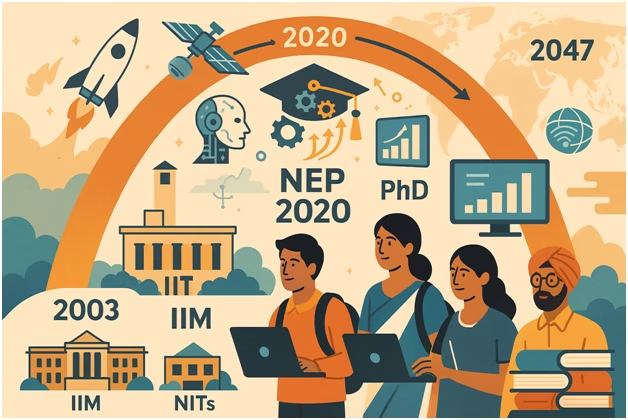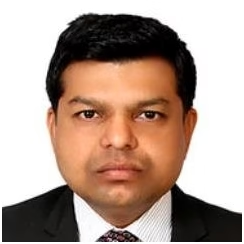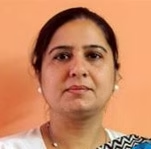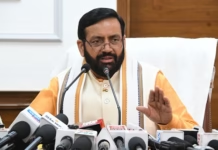Exclusive Interview: Prof M. P. Chaudhary on Two Decades of Transformation in Indian Higher Education and R&D
Ramsagar Yadav/ May 6,2025
Interviewer: Prof M. P. Chaudhary, currently serving as President at Mission Promote Research, and Albert Einstein Chair Professor of Mathematical Sciences at the International Scientific Research and Welfare Organization, along with other academic, research and administrative positions, is a distinguished educationist and author of several books including a book titledHigher Education in India and Problems, lauded by former President K R Narayanan in 2003. Today, we explore the evolution of Indian higher education and research over the past more than two decades under UPA and NDA governments, focusing on breakthroughs, challenges, and the critical issue of low R&D spending. Welcome, Professor.
Prof Chaudhary: Thank you for the opportunity. Indian higher education has made strides, but our low R&D investment remains a critical barrier to becoming a global knowledge leader. Let’s dive in.
Q1: Sir, let’s begin with 2003 – 2008. What were the key developments in Indian higher education during this period?
Prof Chaudhary: The 2003 – 2008 period, under the UPA government, was a phase of institutional expansion. Eight new Indian Institutes of Technology (IITs) were announced in 2008, increasing the total to 15, addressing the surging demand for technical education amid India’s IT boom. The National Institutes of Technology (NITs) grew, with many Regional Engineering Colleges upgraded, reaching 20 by 2008. The Pradhan MantriSwasthya Suraksha Yojana (PMSSY) in 2003 sanctioned six new All India Institutes of Medical Sciences (AIIMS) in Bhopal, Bhubaneswar, Jodhpur, Patna, Raipur, and Rishikesh to enhance medical education and reduce regional disparities.
The Gross Enrollment Ratio (GER) in higher education rose from 8.1% in 2001 – 02 to 11% by 2008, but India lagged globally, where developed nations averaged 40–50%. Faculty shortages were severe, with a 26:1 student-faculty ratio against an ideal 10:1. R&D spending was a mere 0.8% of GDP, declining to 0.7% by 2008 – 09, among the lowest globally, as later highlighted by NITI Aayog’s 2021 India Innovation Index. This underinvestment stifled research output, with only 10% of institutions having significant industry partnerships. As a scientist, I see this as a system with potential but lacking the fuel for innovation.
Q2: What advancements occurred between 2008 and 2013, and how did they address the challenges?
Prof Chaudhary: The 2008 – 2013 period saw robust institutional growth under UPA. The Central Universities Act, 2009, established 15 new Central Universities, totaling 40, in states like Odisha and Kashmir to ensure equitable access. Seven new Indian Institutes of Management (IIMs) were set up in Shillong, Rohtak, Ranchi, Raipur, Udaipur, Tiruchirappalli, and Kashipur, bringing the total to 13. Indian Institutes of Science Education and Research (IISERs) in Bhubaneswar and Thiruvananthapuram bolstered scientific research.
The UGC’s 2009 PhD regulations standardized research quality, contributing to a fourfold rise in PhD output, reaching 22,849 annually by 2013, with over 50% in STEM. However, India’s R&D spending remained stagnant at 0.7% of GDP, compared to China’s 2% and Brazil’s 1.2%. This low investment led to brain drain, with talented researchers moving abroad for better opportunities, as noted in NITI Aayog’s study. Only 15 Indian institutions ranked in the global top 1,000, and 40% of faculty positions in Central Universities were vacant. The mismatch between academic curricula and industry needs further hampered employability, with just 45% of graduates job-ready. As a scientist, I’d say we built infrastructure but neglected the innovation engine.
Q3: From 2013 to 2018, how did the NDA government’s policies shape higher education?
Prof Chaudhary: The 2013 – 2018 period, under NDA, balanced expansion with quality reforms. Seven new IITs (Palakkad, Tirupati, Dhanbad, Bhilai, Goa, Jammu, and Dharwad) and seven IIMs (Amritsar, Bodh Gaya, Nagpur, Sirmaur, Sambalpur, Visakhapatnam, and Jammu) were established, totaling 23 IITs and 20 IIMs. The Higher Education Financing Agency (HEFA), launched in 2017, mobilized Rs 20,000 crore for infrastructure. The Institutions of Eminence (IoE) scheme in 2018 granted autonomy to 20 institutions like IIT Bombay and Ashoka University to achieve global excellence.
The Prime Minister’s Research Fellowship (PMRF) in 2018 offered Rs 70,000–80,000 monthly stipends to PhD scholars, boosting STEM research. India’s GER reached 25.8% by 2018, but only three institutions (IIT Bombay, IIT Delhi, IISc Bengaluru) ranked in the global top 200. R&D spending remained at 0.7% of GDP, far below the world average of 1.8%, exacerbating brain drain. Faculty vacancies hit 40% in IITs, and only 50% of graduates were employable. As a scientist, I view this as a system with high thrust but poor trajectory due to underfunding and bureaucratic hurdles.
Q4: The 2018–2023 period introduced NEP 2020 and saw major space missions. How did these impact higher education?
Prof Chaudhary: The 2018–2023 period was transformative, driven by the National Education Policy (NEP) 2020. Key reforms included:
- Credit Mobility: The Academic Bank of Credits (ABC) enrolled 3 crore students by 2023, enabling seamless degree completion across institutions.
- Flexible Qualifications: Students can earn certificates, diplomas, or degrees based on credits, aligning with global norms.
- MPhil Discontinuation: This focused research on PhDs, enhancing quality.
- Four-Year UG and One-Year PG Programs: These improved global mobility and employability.
NEP 2020 targets a 50% GER by 2035. By 2023, GER reached 28.4%, with 4.14 crore students enrolled, a 21% rise since 2014. Multidisciplinary institutions like Sai University emerged, breaking silos. However, R&D spending remained low at 0.64% of GDP in 2020–21, compared to South Korea’s 4.8% and China’s 2.4%. This contributed to stagnant research performance and brain drain, with India’s GERD at $43 per capita, far below Russia’s $285.
India’s space achievements were stellar. Chandrayaan-3’s soft landing on the Moon’s south pole on August 23, 2023, made India the first nation to achieve this. Aditya-L1, launched September 2, 2023, reached the Sun’s L1 point on January 6, 2024, as India’s first solar observatory. These missions, involving IITs and IISc, showcased research potential but highlighted the need for higher R&D investment. Only 49,000 international students studied in India in 2020, versus 5 lakh Indian students abroad, reflecting limited global appeal. As a scientist, I see NEP as a catalyst, but low R&D funding risks stalling our ascent.

Q5: From 2023 to the present, what trends and breakthroughs have shaped higher education, and what’s your vision?
Prof Chaudhary: Since 2023, NEP 2020’s implementation has gained momentum. The National Testing Agency’s CUET unified entrance exams, easing student burden. Over 1,100 universities and 45,000 colleges adopted NEP’s multidisciplinary framework, with 56% connected to the National Knowledge Network. The National Research Foundation (NRF), established in 2023, allocated Rs 50,000 crore over five years, selecting 135 PMRF scholars from IITs and NITs.
India’s global rankings improved, with 71 universities in the 2021 World University Rankings, up from 63 in 2020. NIRF 2024 ranked AIIMS Delhi (91.60) and IIT Madras (90.04) as top institutions. However, R&D spending at 0.67% of GDP remains low, with private sector contribution at 36.4%, compared to 70% in China and the US. Faculty vacancies hit 52% in Central Universities, and only 50.8% of graduates were employable in 2023.
Vision: India must triple R&D spending to 2% of GDP by 2030, with private sector contributing 1.5%, as suggested by Kris Gopalakrishnan. Establish 1,000 industry-academia Centers of Excellence, attract 1 million international students by 2040, and target 80% graduate employability by 2035. A scientific approach – integrating funding, autonomy, and global partnerships – can make India a knowledge superpower.
Q6: NITI Aayog’s 2021 India Innovation Index flagged India’s R&D spending as among the lowest globally, at 0.7% of GDP. How has this impacted higher education and research?
Prof Chaudhary: India’s R&D spending, declining from 0.8% in 2008 – 09 to 0.7% in 2017 – 18, is a critical bottleneck. Compared to BRICS nations – Brazil (1.2%), Russia (1.1%), China (>2%), South Africa (0.8%) – and the global average of 1.8%, India’s $43 per capita GERD is dwarfed by Russia’s $285 and Malaysia’s $293. This underinvestment has:
- Limited Research Output: Despite 3,00,000 publications in 2022, India’s citation impact lags globally due to insufficient funding.
- Brain Drain: Low R&D investment drives researchers abroad, reducing India’s competitive edge, as NITI Aayog noted.
- Industry-Academia Gap: Only 10% of HEIs have strong industry ties, exacerbating the mismatch between curricula and industry needs.
For a $5 trillion economy, India needs 2% GDP on R&D. The NRF and ₹1 lakh crore corpus announced in 2024 are steps forward, but private sector contribution, at 36.4%, must rise to 50%.
Q7: The NITI Aayog study linked low R&D spending to brain drain. How can India retain talent in higher education and research?
Prof Chaudhary: Brain drain, as NITI Aayog’s study highlighted, stems from low R&D spending and limited innovative opportunities. India produces 40,813 PhDs annually, ranking third globally, but many move abroad for better funding and infrastructure. To retain talent:
- Increase R&D Funding: Triple GERD to 2% of GDP by 2030, with 1.5% from private sector, as Kris Gopalakrishnan advocated.
- Enhance Infrastructure: Establish 50 cutting-edge research hubs in HEIs, like ISRO’s collaborations with IITs.
- Incentivize Research: Expand PMRF to 10,000 scholars and offer tax breaks for private R&D, as seen with 516% FDI growth in R&D in 2021.
- Global Partnerships: Leverage India’s 90 bilateral S&T agreements to expose researchers to world-class ecosystems.
A scientific mindset—treating talent as a renewable resource—requires investment and opportunity to thrive.
Q8: The study noted a mismatch between university curricula and industry needs. How can this be addressed?
Prof Chaudhary: The mismatch, flagged by NITI Aayog and the RBI, results from low industry-academia collaboration and outdated curricula. Only 50.8% of graduates are employable, reflecting this gap. Solutions include:
- Co-Developed Courses: Partner with industries to design curricula, as seen in IIT Madras’s industry-aligned programs.
- Internship Mandates: Integrate mandatory internships, with 70% of NEP-adopting institutions already doing so.
- Skill Centers: Establish 1,000 Centers of Excellence by 2030, focusing on AI, quantum computing, and biotech, funded by NRF.
- Faculty Training: Upskill faculty through industry sabbaticals, reducing the 52% vacancy rate’s impact.
This requires a systems approach, aligning education with market signals, much like optimizing a neural network.
Q9: How can India leverage its space and tech breakthroughs to boost R&D in higher education?
Prof Chaudhary: Chandrayaan-3 and Aditya-L1, involving IITs and IISc, demonstrate India’s research potential. To amplify this:
- Space and AI Hubs: Create 50 R&D hubs in HEIs by 2030, funded by NRF, focusing on space, AI, and quantum tech.
- Mission-Driven Curricula: Embed projects like ISRO’s in curricula to inspire innovation, targeting 1 million students.
- Global Collaboration: Partner with NASA or CERN, leveraging India’s associate membership, to enhance research exposure.
- Private Investment: Incentivize firms to contribute 1.5% to R&D, as Gopalakrishnan suggested, building on 2021’s 516% FDI surge.
This can transform HEIs into innovation engines, like SpaceX’s synergy with universities.
Q10: What’s your boldest prediction for Indian higher education and R&D by 2047?
Prof Chaudhary: By 2047, India can lead global education and innovation if R&D spending reaches 3% of GDP, with private sector at 1.5%. I predict 15 universities in the global top 50, a 70% GER, and 60% of graduates in high-skill global jobs. India could launch a Mars mission from an IIT or produce multiple Nobel laureates. This requires a scientific revolution: robust funding, autonomy, and a culture of curiosity, making India the epicenter of knowledge creation.
Interviewer: Prof Chaudhary, your insights are a clarion call for action. Thank you for illuminating India’s higher education and R&D journey.
Prof Chaudhary: My pleasure. Let’s engineer an education system that powers India’s rise as a global knowledge hub.
About Mission Promote Research (MPR):
Mission Promote Research is a premier research organization headquartered in Mumbai, India. Under the dynamic leadership of Prof. (Dr.) M. P. Chaudhary (President), Dr. Mukhdeep Singh Manshahia (Vice President), and Ramsagar Yadav (Secretary), MPR continues to advance its mission of promoting excellence in research and fostering international academic collaboration.

Disclaimer: The news interview titled “Exclusive Interview: Prof. M. P. Chaudhary on Two Decades of Transformation in Indian Higher Education and R&D” features Prof. Dr. M. P. Chaudhary (President, MPR), interviewed by Ramsagar Yadav (Secretary, MPR), and was published from Mumbai. The opinions expressed in the interview are those of the individuals involved and do not reflect the official stance of the royalpatiala.in web portal. The royalpatiala.in web portal disclaims any liability for the accuracy, reliability, or validity of the information presented. It does not endorse, facilitate, or assume responsibility for any communication or interaction with the interviewee or interviewer.













